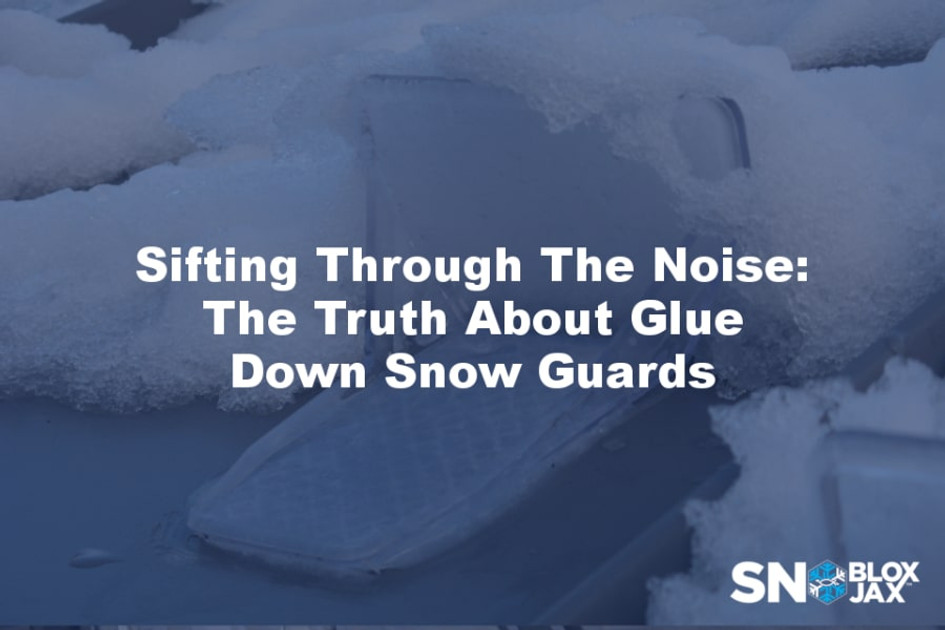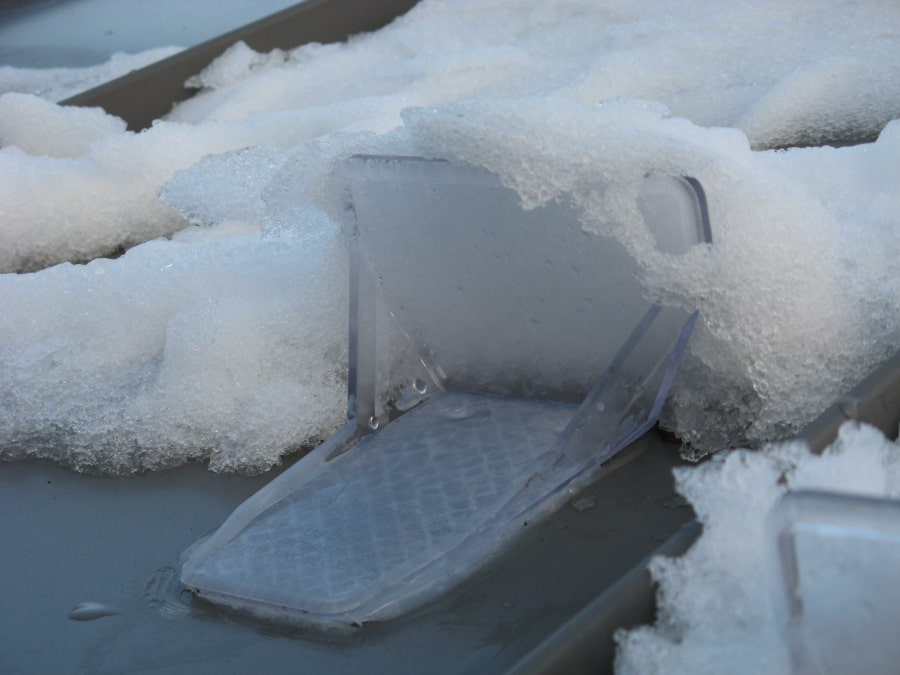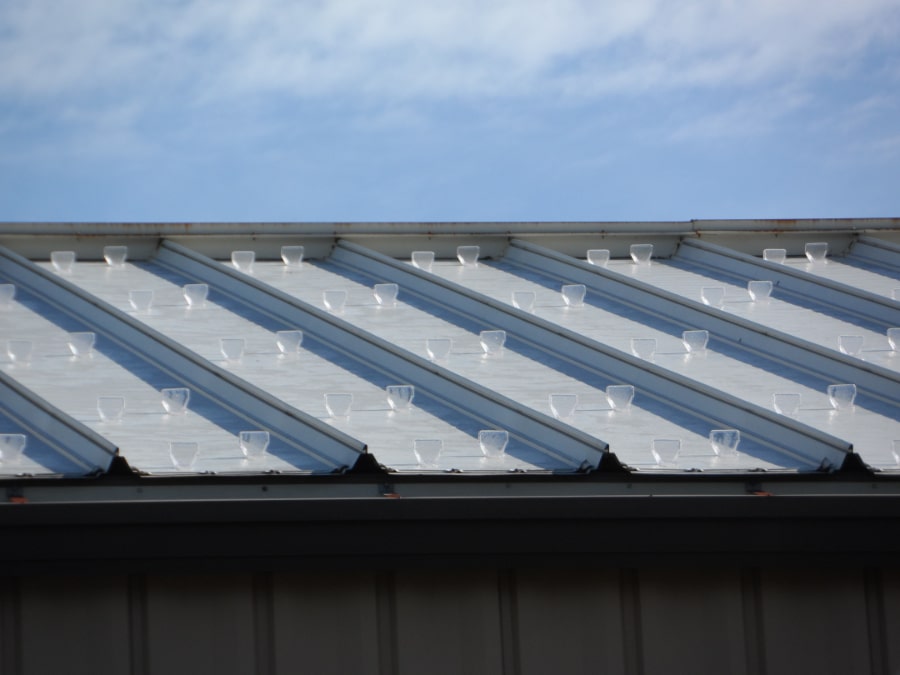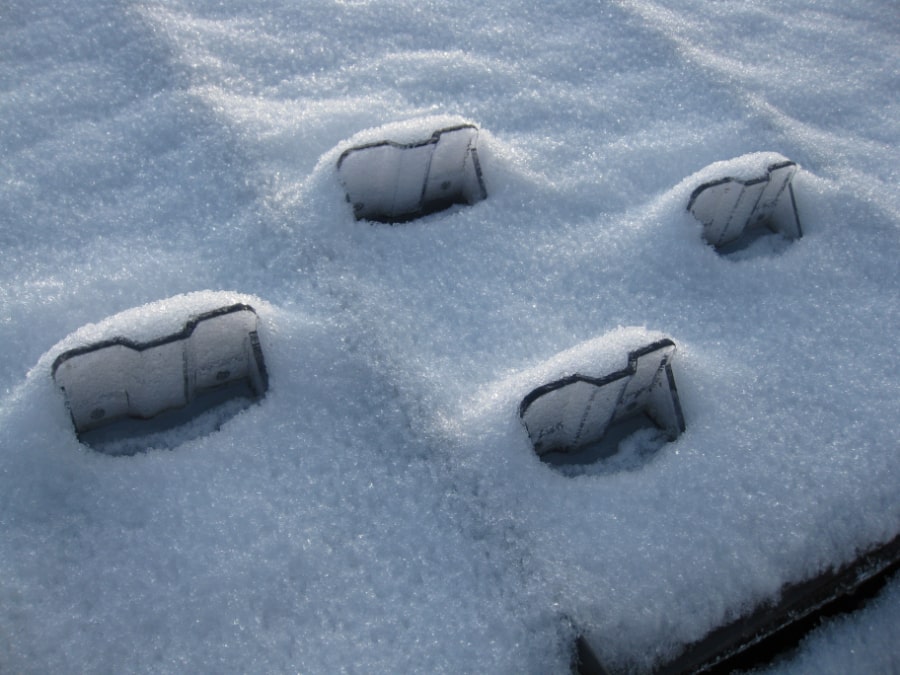Sifting Through the Noise: The Truth About Glue Down Snow Guards
Posted by Derek Gamble - SnoBlox-Snojax Specialist on Dec 12th 2023
Dispelling Misinformation
When it comes to protecting your roof from the potential hazards of sliding snow and ice, selecting the right snow guard system is critical. The market is saturated with companies offering snow guards and retention systems of all shapes, sizes, materials, and attachment methods. Today we are going to talk about one particular form or attachment that gets a bad reputation, often for no reason. That is the installation of polycarbonate plastic snow guards with adhesive. Glue-down snow guards are far too often the butt of jokes by those who oppose them commonly out of ignorance of the products. They say things like “They aren’t strong” or “They don’t stay on the roof” but often leave out of the conversation that most failures come from installer error. Today I’d like to clear up some of the misconceptions, sift through the noise, and get to the truth of the matter. We are, after all, the Originator of Polycarbonate and Glue Down Snow Guards, so we have some experience with this topic.
The Advantage of Glue Down Snow Guards
One of the primary advantages of glue-down snow guards is that unlike other types of snow guards that rely on mechanical fasteners, these snow guards use a strong adhesive to bond directly with the roof. This keeps the owner from needing to penetrate their expensive metal panels, which can potentially lead to roof leaks and/or loss of warranty from the panel manufacturer if done incorrectly.
There is only one adhesive that we recommend and it is Surebond SB-190. This glue is the industry standard for companies that offer glue-down snow guards. It is specifically designed to withstand extreme weather conditions, ensuring a reliable bond that shouldn’t weaken or fail when installed properly. This contributes to the overall effectiveness of the snow guard system in preventing dangerous snow slides that can damage property or injure people and/or pets. We have tested hundreds of glues over the years and none hold a candle to Surebond SB-190 in strength or durability.
The Real Reasons Why Glue Down Snow Guards Sometimes Fail
“My neighbor put glue down snow guards on their roof and they came off with the first snowfall!”
The Importance of Obtaining A Layout
Ok, well let’s take a look at that. There are a lot of factors that can contribute to a guard failure and no two situations are alike. First and foremost, did they get a layout when they purchased the system? Any time you are purchasing snow guards, it is important to make sure that you are ordering from a reputable company that specializes in snow retention and offers design guidance for their products. Next, if they did get a layout...did they follow it? A proper snow retention system, regardless of attachment method, requires the guards to travel the full length of the roof and will often need multiple rows going up the slope to help distribute the weight evenly over the entire roof surface. Isolated placements like those just over doorways, walkways, HVAC units, etc. are prone to failure from overloading. This is true of even the most heavy-duty snow retention products. It is also important to make sure that any areas that shed snow from above also have snow guards installed. Snow guards are not meant to act as a roadblock for moving snow and ice. They are meant to hold the snow in place, allowing it to melt and drain away from the roof safely. Ground snow load is also an important aspect of designing a snow guard layout. We never recommend pad-style snow guards to be installed on roofs in geographic locations with ground snow loads above 45 psf. At that point, we begin directing customers to our bar systems. Check out our other blogs for more information on these systems.
We constantly hear stories from customers about contractors and roofers scoffing at our layouts because they “know what they are doing” and “have x amount of years in the industry”. They assure their clients that we are just trying to go overkill to sell more products. Let me tell you how often we also hear back from these same customers about system failures caused by overconfident installers. No one knows a product more than the manufacturer, so it is important to follow these spacing recommendations and instructions so that you don’t have to do the job twice. Let me remind you that we invented this product over 25 years ago.
Achieving A Full Cure Is Vital
Another major contributing factor in glue-down snow guard failures is not giving the glue a proper window of time and temperature to achieve a full cure. Surebond SB-190 requires approximately 28 days at or above 50 degrees Fahrenheit to achieve a full cure. That means the best time to install your snow guards is in the late spring or early summer. Unfortunately, this is the time of the year when people are trying to forget about snow and ice for a bit. Their minds are focused on warmer thoughts and activities. The problem with this mindset, however, is that it kicks the can down the road and results in a flood of calls from customers in late September and early October who are scrambling to get snow retention on their roofs. We sell our products all over the USA and Canada, including Alaska. Often waiting until the fall is too late for customers in colder Northern climates. Keep in mind that rain (after 24 hours) or temps below 50 won’t hurt the glue, but will pause the curing process and increase the amount of time that it takes.
Glue-down snow guards are compatible with a wide range of metal roofing styles, making them a versatile choice for various roofing applications. They are especially popular for use on standing seam metal roofs that cannot accept screw-down guards due to their floating nature. Beyond their functional benefits, glue-down snow guards offer an aesthetically pleasing design that seamlessly integrates with the roof's appearance often appearing invisible. This ensures that your roof maintains its clean look while still benefiting from the enhanced safety provided by the snow guard system.
Glue Down Snow Guard Strength Test Results
Glue-down snow guards are very strong when installed properly. We have laboratory-tested all of our polycarbonate snow guards that can be installed with adhesive and the numbers speak for themselves. An example of this strength can be found with our IceJax 2 which rated at a staggering 1561 pounds when adhesive mounted using the Surebond SB-190. The SnoBlox Deuce is one of our most popular products and is rated at 1,379 pounds when installed with the same glue. An added benefit for glue-down installation that is not often discussed is that in the event of a failure, the guards simply release from the panel without causing damage to it and then can be glued right back in place when the weather warms up again. SureBond SB-190 is known to cure to itself, eliminating the need to try and remove the adhesive that was left behind on the roof. Just clean the area with soap and water, apply some more glue to the bottom of the guard, and press it right back into its footprint. Installing glue-down snow guards is a straightforward process that doesn't require complex tools or specialized skills. This ease of installation not only saves time but also reduces the likelihood of errors during the setup process.
Now that we’ve explained the truth about glue-down snow guards, I think you can see that in the realm of snow guard systems, glue-down snow guards often emerge as a superior choice, providing secure attachment, versatility, aesthetic appeal, reduced risk of damage, ease of installation, and cost-effectiveness. Winter has already returned this year, but spring is right around the corner. As it approaches, it is never too early to begin planning to safeguard your roof from the hazards of snow and ice. Choosing glue-down snow guards ensures that your roof remains not only safe and functional but also maintains its visual integrity for years to come. If you are looking for more information or layout assistance, you can visit our Spacing Guidelines Page, fill out our Snow Guard Quote Request Form, visit SpacingTool.com, send us an email at support@snojax.com, or give us a call at 1-800-766-5291.





